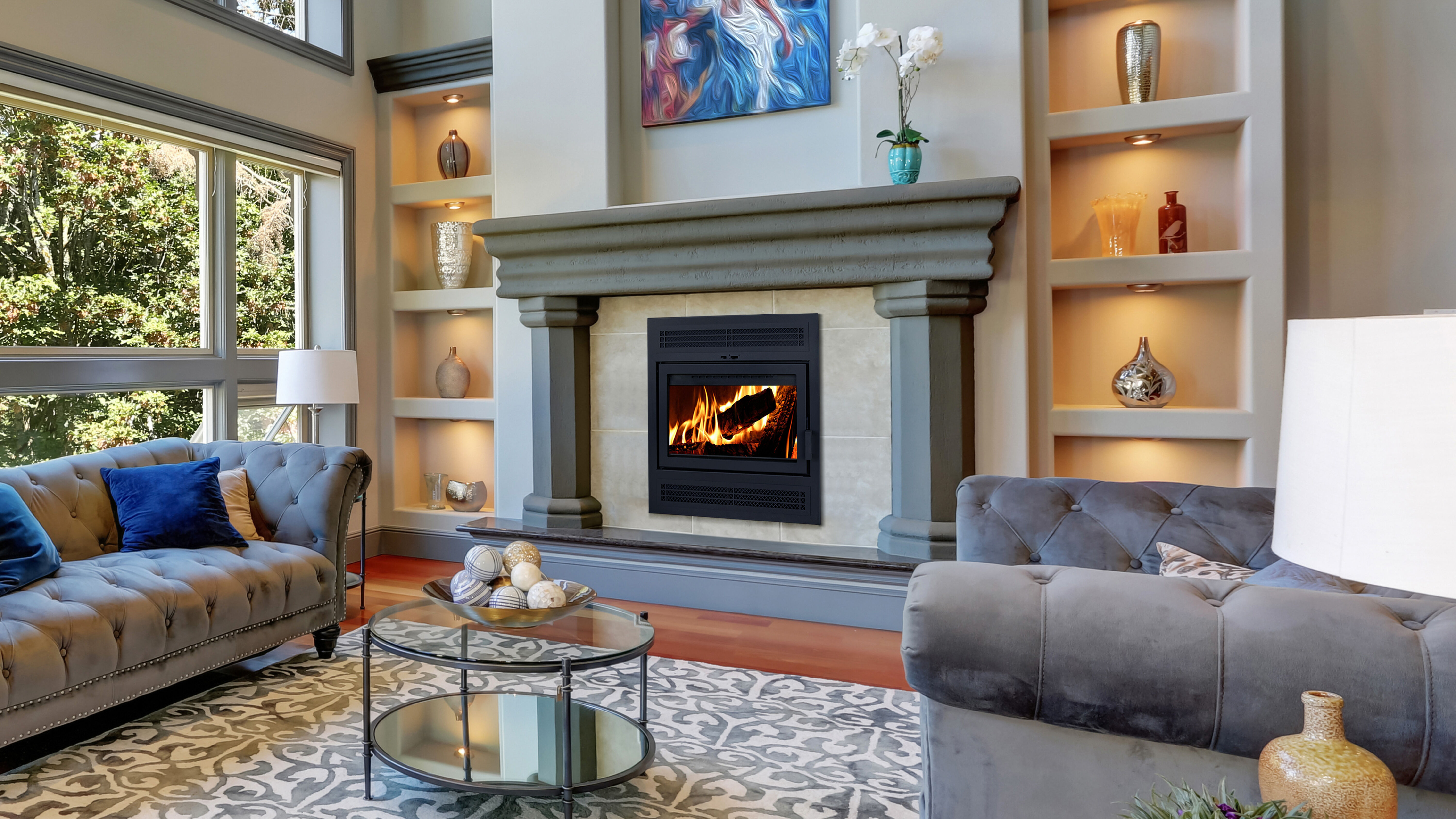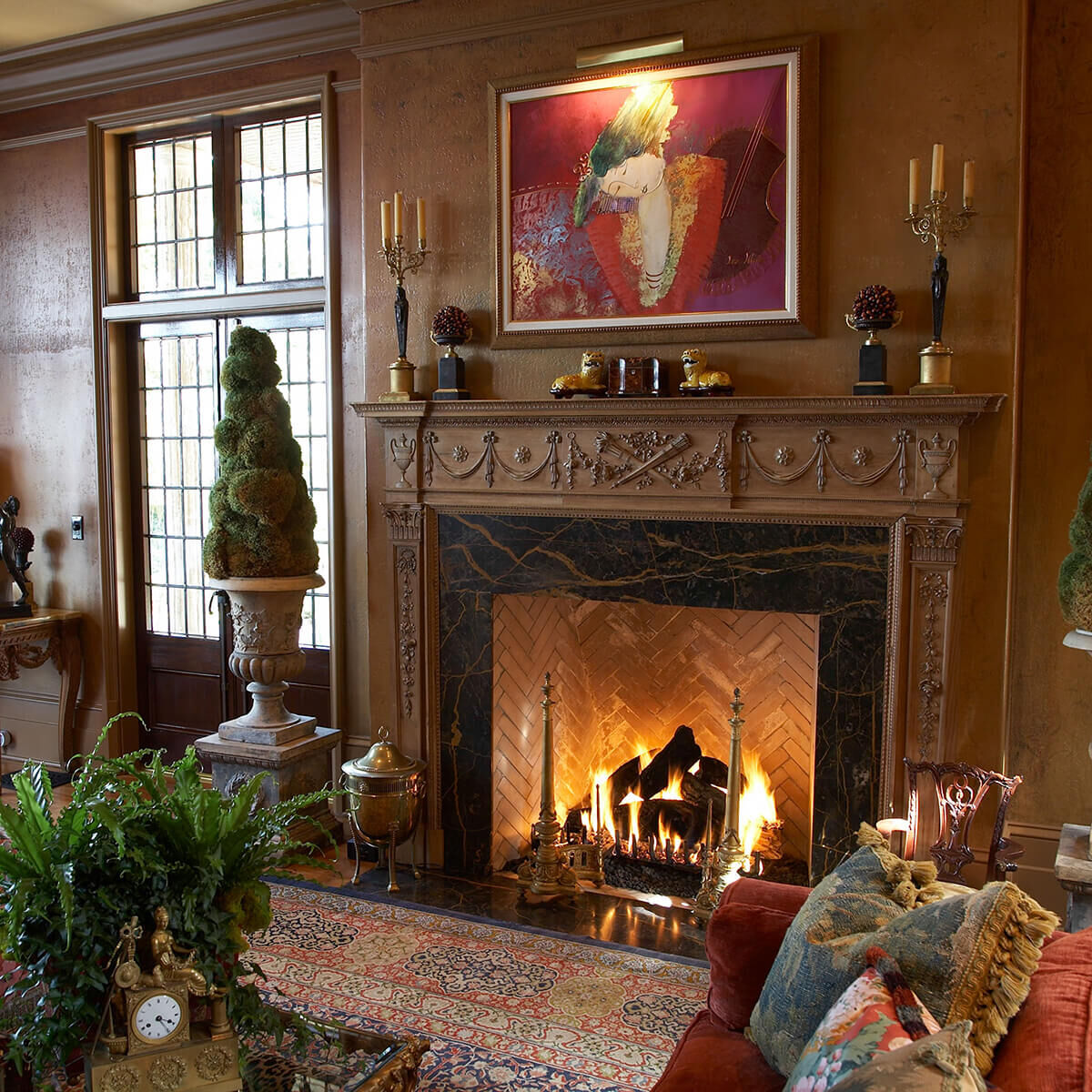Last Updated: March 8, 2024
No matter your home design style, it’s possible to put fire at the center of your living space. From traditional family rooms to eclectic Bohemian lounges and airy Scandinavian lofts, you can easily find a fire feature that makes your home feel like paradise.
Below, we’ve listed our top fire products for each design style to help you create a cozy central gathering spot that adds value to your property and suits your personal taste.
CHOOSE YOUR STYLE
TRADITIONAL
Traditional interior design is all about creating a harmonious atmosphere that’s refined, yet welcoming and family friendly.
This classic, familiar style is inspired by popular European décor from the 18th and 19th centuries, with nostalgic patterns and earth-toned hues.
A typical traditional living space has a neutral color palette, a natural stone or brick hearth, and dark wooden furniture with few ornamental details, instead of trend-setting accent pieces, bright colors, and bold artwork.
TRADITIONAL FIREPLACES
TRADITIONAL FIREPLACE DOORS
TRADITIONAL GAS LOG SETS
TRADITIONAL FIRE PITS
MODERN
Modern design is rooted in modernism, a turn-of-the-century art movement focused on abstract thinking, functionality, and simple forms. This chic, clean style is characterized by straight lines, monochromatic colors, minimal accent pieces, and natural lighting.
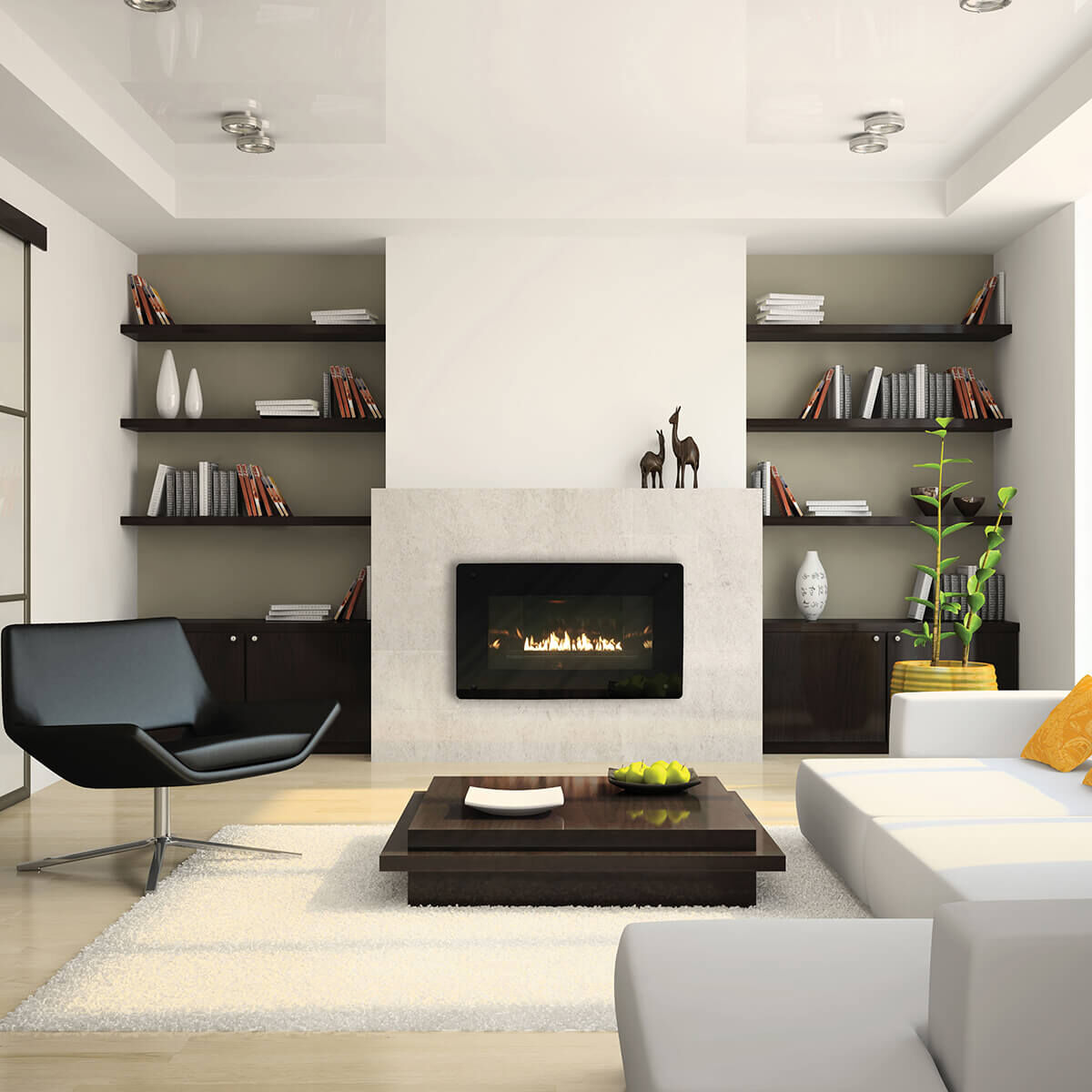
Modern style incorporates low, long furniture made from natural materials or unpainted wood and metal. Other common modern finishes include leather, wood veneers, glass, chrome, steel, and concrete.
MODERN FIREPLACES
MODERN FIREPLACE DOORS
MODERN FIRE MEDIA
MODERN FIRE PITS
MID-CENTURY MODERN
Mid-Century Modern design refers to the simple, clean, and functional furnishings of the 20th century, which reflected society's desire for a more modern, organic way of life.
The style is sleek and straightforward, featuring wood, metal, glass, and vinyl materials that are often used together to create an eclectic look.
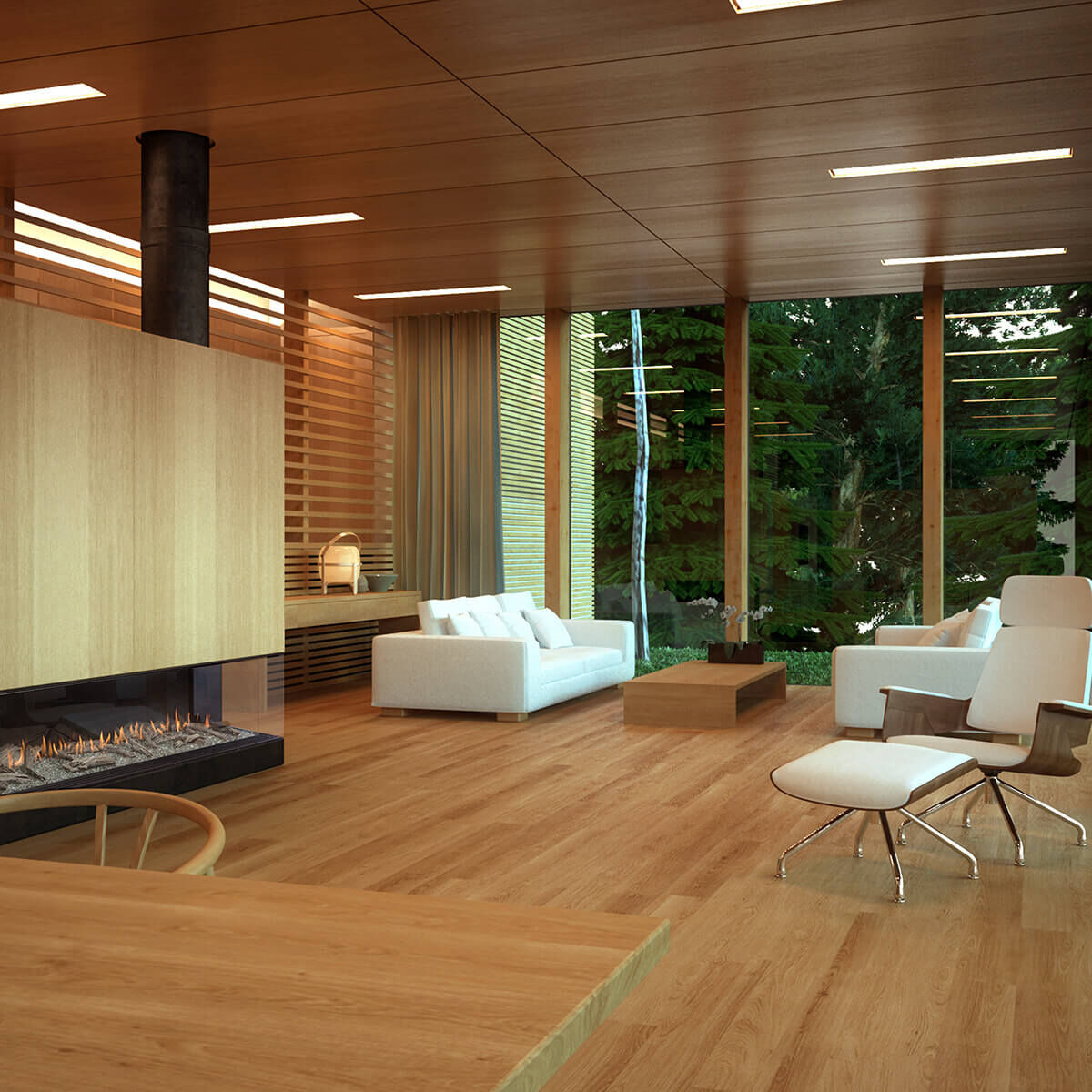
Curved furniture is a hallmark of Mid-Century Modern design, including oblong coffee tables and angular, geometric accent pieces.
Unlike standard modern design, Mid-Century Modern also includes vibrant accent color and dynamic decorative elements.
MID-CENTURY MODERN FIREPLACES
MID-CENTURY MODERN FIRE PITS
MODERN FARMHOUSE
Modern Farmhouse style pays homage to simpler times, without sacrificing any of the present-day luxuries we're used to.
The word "farmhouse" makes most people picture a rustic atmosphere stocked with barnyard elements. However, Modern Farmhouse style is the contemporary take on traditional country with natural touches, smooth lines, brushed metals, and a neutral color palette.
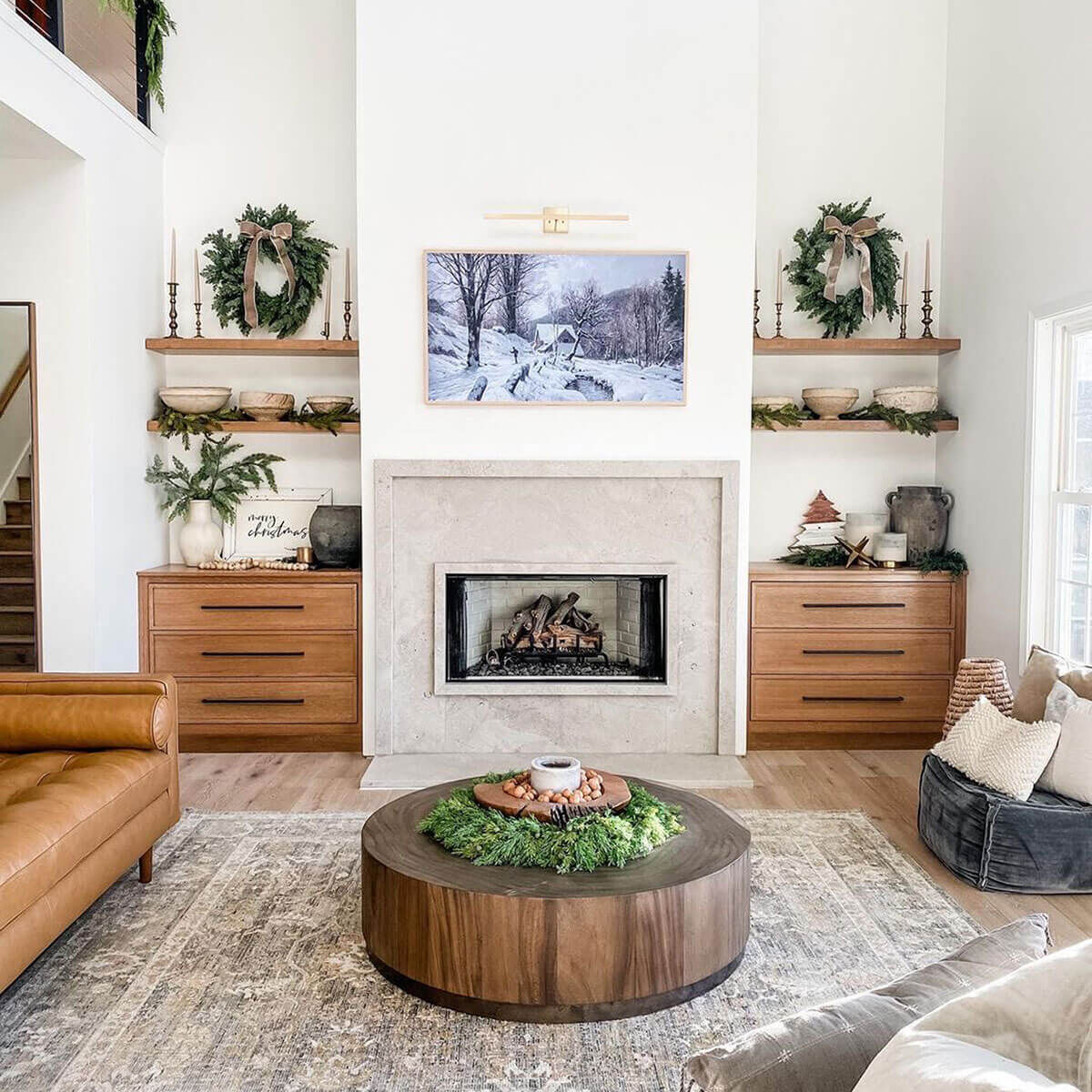
Modern Farmhouse style relies on layers of cozy materials, warm colors, and classic patterns to create a relaxed, lived-in look that embraces natural elements and subtle imperfections.
MODERN FARMHOUSE FIREPLACES
MODERN FARMHOUSE FIRE PITS
BOHEMIAN
Bohemian design displays the organic textures, patterns, colors, and motifs of nature. Often a reflection of a person's travels, Boho style encourages mixing, matching, and layering textures and patterns to create a comfortable, meaningful atmosphere.
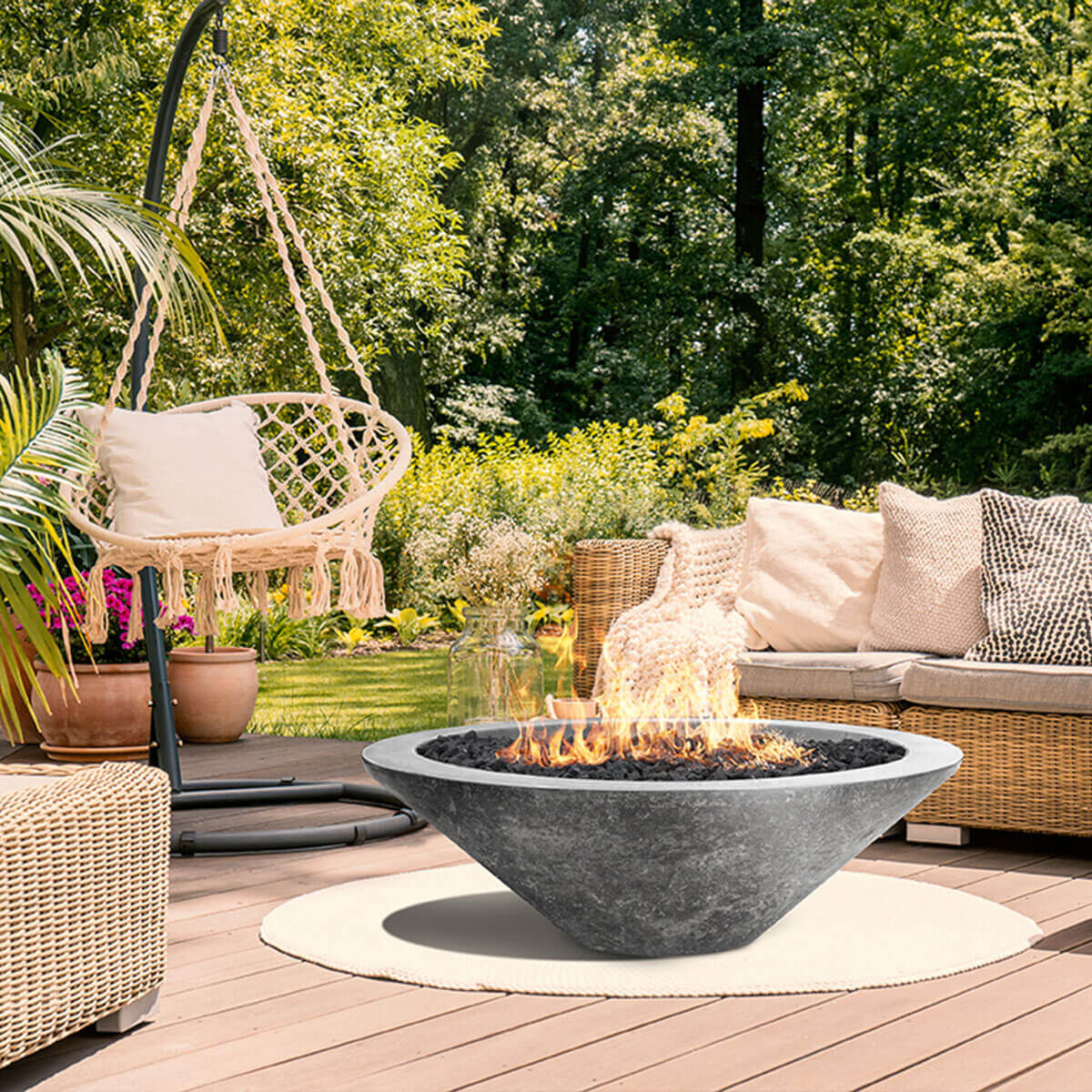
Textiles and woven furnishings, such as rattan and wicker, create a cozy depth that helps define Boho style. You can also play with vibrant accent colors, trendy patterns, and soft fabrics to add more interest and dimension to your space.
BOHEMIAN FIREPLACES
BOHEMIAN FIRE PITS
Scandinavian style is marked by clean, simple lines, minimal accent pieces, and functionality. First introduced in 1950, Scandinavian design incorporates organic elements, bright natural lighting, sustainable décor, and a monochromatic color palette.
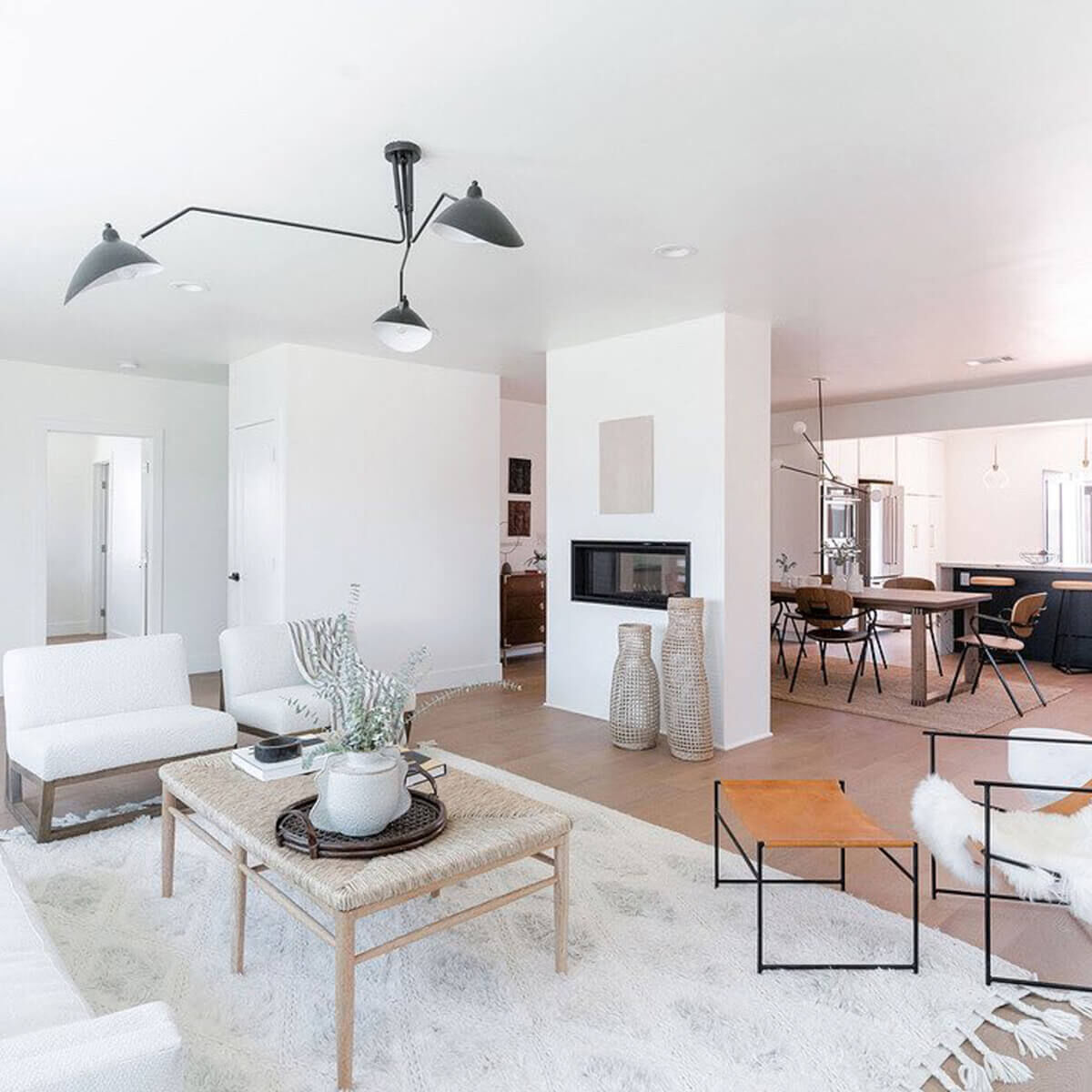
The use of light-colored wood, cotton, wool, and house plants reinforce the organic nature of Scandinavian design, while multiple light sources, from the warm glow of a fireplace to a floor-to-ceiling window, let in plenty of light without creating a harsh, sterile atmosphere.
SCANDINAVIAN FIREPLACES
SCANDINAVIAN FIRE PITS
TRANSITIONAL
Transitional design is a balanced blend of traditional and modern styles, sampling the core elements from each aesthetic to form a timeless, fresh look that's polished, yet casual and approachable.
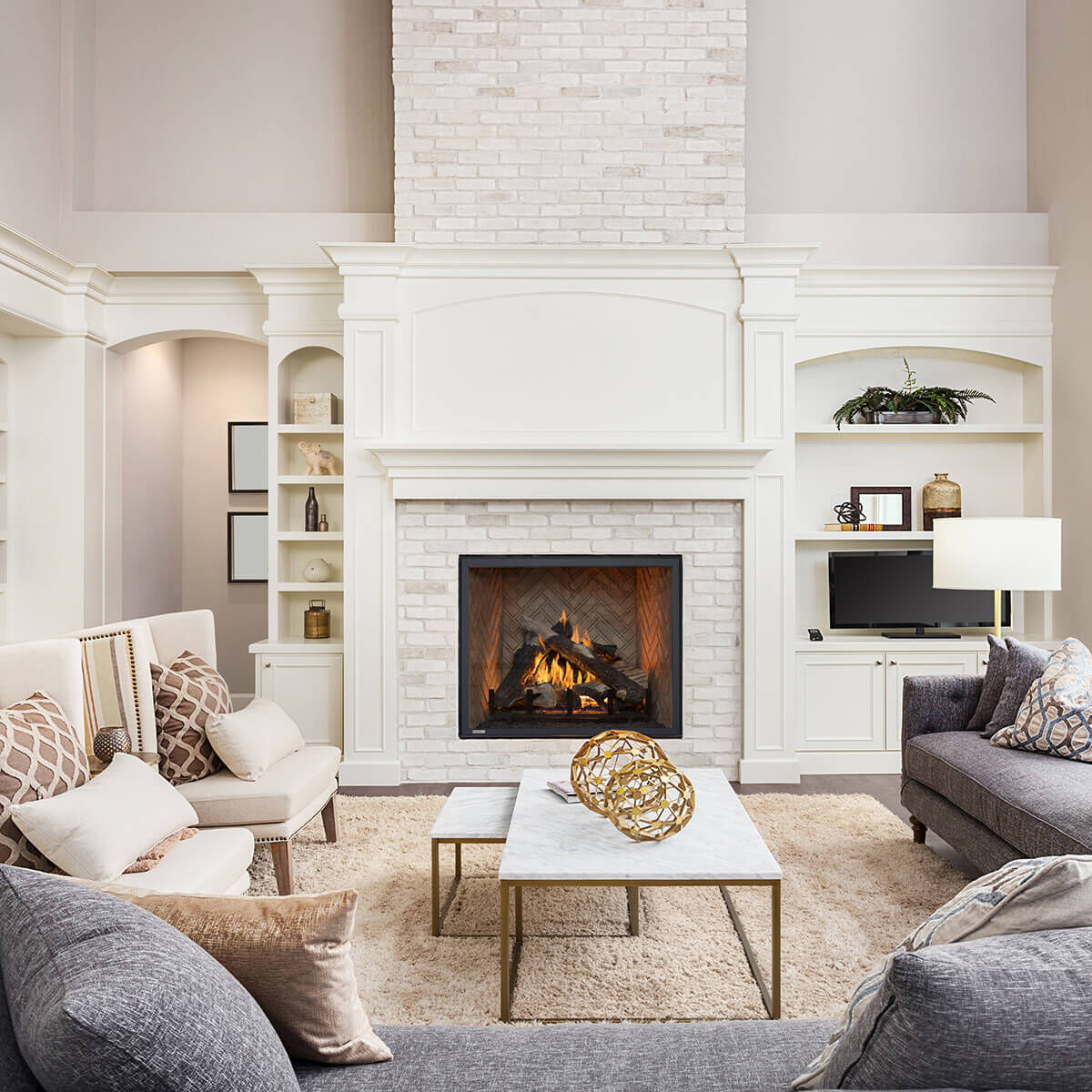
Ideal for someone who appreciates both classic and contemporary taste, transitional design features a neutral color scheme, with darker colors reserved for accent pieces.
A transitional space has a cozy, inviting atmosphere, with plush cushions and large-scale patterned textiles that aren't overwhelming in the room. It also incorporates layered metals, glass, and natural materials, like rattan and wood, for a more relaxed feel.
TRANSITONAL FIREPLACES
TRANSITIONAL FIRE PITS
INDUSTRIAL
Industrial design fuses modern style with old-world charm for an organic, stripped-back look that encourages the use of reclaimed furnishings and recycled materials.
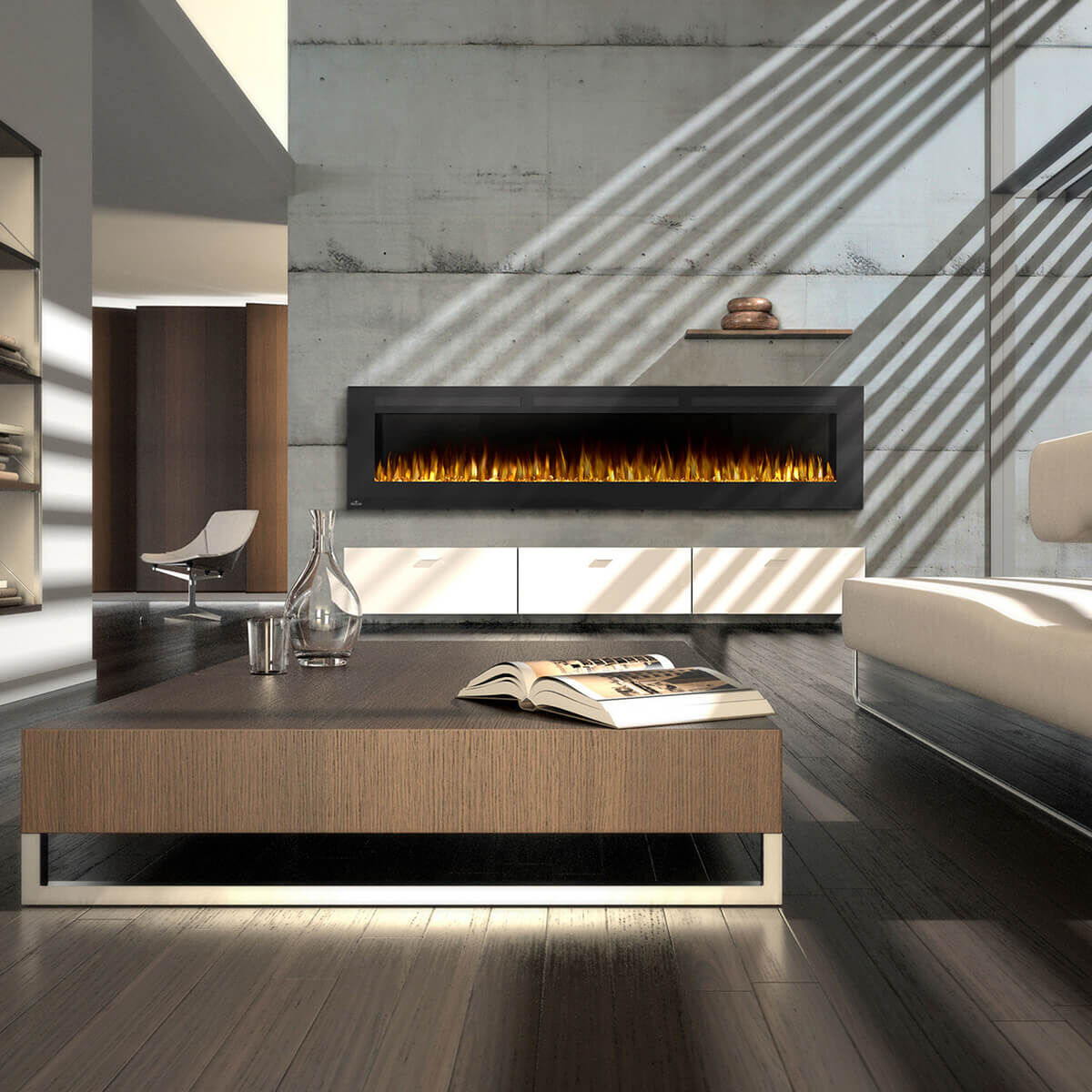
Perfect for those who prefer a "no frills" approach to home décor, an industrial space is typically free of clutter and incorporates raw architectural details, such as bare brick, cement, metal, and wood, as well as salvaged, hardwearing furniture.
Industrial design boasts neutral color schemes, natural materials, blocky shapes, and crisp, squared lines to create a cohesive, utilitarian atmosphere.
INDUSTRIAL FIREPLACES
INDUSTRIAL FIREPLACE DOORS
INDUSTRIAL FIRE PITS
FRENCH COUNTRY
French Country design can make even the most urban home feel like it's located in a quaint European village. The style is a harmonious mix of rustic and refined décor, inspired by homes found in the French countryside.
Popular for it's comfortable and casual elegance, French Country style features muted color schemes, distressed, painted, and vintage furnishings, and natural materials, like wood, linen, and cotton.
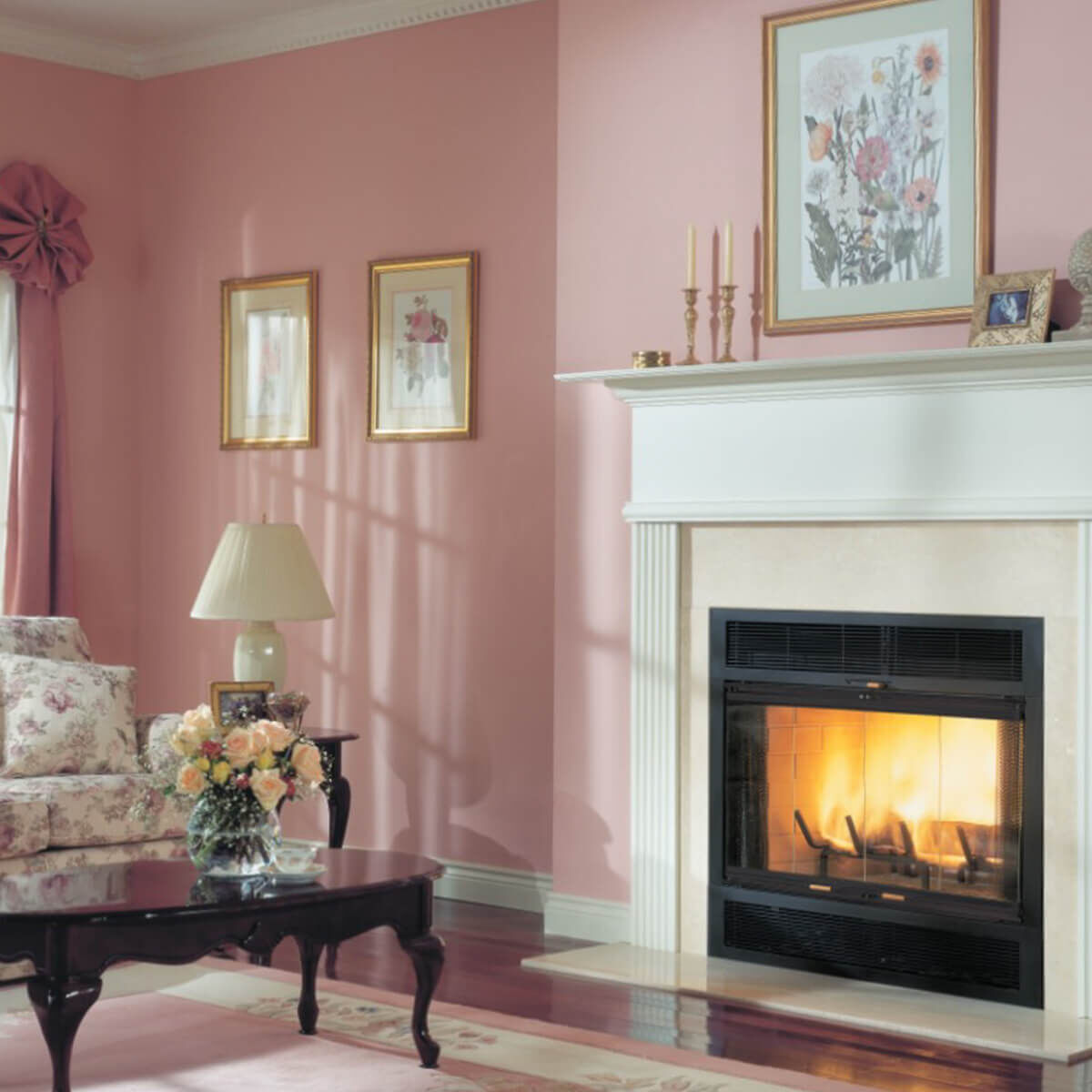
Accent colors in a French Country space are usually warm-toned yellows, reds, pinks, blues, and creams. It also includes patterned fabrics, such as toile, stripes, plaids, checkers, gingham, sunflowers, roosters, demasks, and small floral designs.
French Country couches and armchairs feature soft, cozy cushions, while side tables and coffee tables are typically made of wood and have elaborate carvings and curves.
Pro Tip:
Toile de Jouy, or toile, is a specific type of linen cloth printed with romantic, pastoral patterns in a single color, such as black, blue, or red, on an unbleached fabric.
FRENCH COUNTRY FIREPLACES
FRENCH COUNTRY FIREPLACE DOORS
FRENCH COUNTRY FIRE PITS
WE’RE HERE TO HELP
Have more questions about finding the right fire feature for your space? We'd love to help! Call our team of NFI Certified experts today at 800.919.1904.
MORE RESOURCES:
Find the right fireplace size and style for your home with our Gas Fireplace Buying Guide
Put eco-friendly ambiance inside your living space with our Electric Fireplace Buying Guide
Discover the different types of burning media you can add to elevate the look of your fire pit
